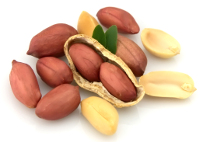More Fat, Less Grain?
Some people have to or want to adjust their diet according to their needs, whether because of their way of life, health or food intolerance. Lately it is not uncommon to hear about various new trends in nutrition, such as the LCHF and paleo diet.
Some of these diets are gluten-free, or contain more fat and less carbohydrates and focus on unprocessed food.
The LCHF diet suggests a decreased carbohydrate and increased fat intake, mostly of animal origin. The so-called paleo diet consists mostly of meat and fish, saturated fats from meat and coconut, fruit and vegetables, while cereals and processed food are not welcomed on the menu.
Regardless of what type of food one prefers, a vegan diet can be customized according to different needs. If there are some groups of plant foods that proponents of certain dietary trends do not eat, there are still plenty of other plant foods that are a good source of nutrients, making it possible to adopt or continue a vegan diet.
Vegans do not have to consume grains so those who avoid gluten do not have to give up on a vegan diet. Macronutrients (fats, proteins and carbohydrates) and micronutrients (vitamins and minerals) can be obtained from other plant sources and their intake adjusted to personal needs.
Foods that in smaller or larger amount contain gluten are grains (wheat, Kamut, spelt, barley, rye). However, grains do not have to be the basis of a diet because there are several groups from which we can choose, and some grains do not contain gluten (oats, sorghum, rice, millet, corn), although caution is needed because they can be contaminated by gluten from other sources, especially oats.
Those who choose to completely eliminate grain from their diet (e.g. want to reduce or maintain body weight by avoiding foods high in carbohydrates, in this case starch) can still enjoy a vegan diet because it contains many rich sources of nutrients:
1. seeds such as flax, sesame, sunflower, pumpkin seeds and cashew nuts are rich in protein and fat, low in carbohydrates (cashew nuts are a bit higher) and can be eaten without any special preparation; their flour and sprouts can be used for making bread, cakes and other dishes, as well as their oils (pumpkin seed, flax, sesame);
2. nuts such as almonds, walnuts, hazelnuts and pecans are also rich in fat and protein and low in carbohydrates;
3. peanuts are rich in fat and protein, while other legumes (beans ,soybeans, peas , chickpeas, lentils, fava beans) are higher in carbohydrates;
4. pseudocereals like buckwheat, amaranth and quinoa are prepared like grains and relatively high in carbohydrates, but gluten-free;
5. fruit (sweet like bananas, apples or apricots), vegetables (tomatoes, bell peppers ,cucumbers), dried fruit and high-fat fruit, such as avocados and olives;
6. vegetables (Savoy cabbage, lettuce, broccoli, carrots, leeks, beets, onions, cauliflower, spinach, radish, celery, parsley, cabbage, lamb's lettuce, zucchini, eggplant, etc.).
7. potato, sweet potato – gluten-free, high in starch, and can be prepared in many different ways;
8. coconut is rich in fat; flour and oil can be used in the preparation of bread and cakes;
9. algae, high in protein and micronutrients.
For example, we can reduce the amount of grains in our diet by consuming more nuts and seeds, such as flax or sesame, increasing the proportion of calories coming from fat and protein and reducing the proportion from carbohydrates. In this way we can eat gluten-free.
There is a lot of options and it is possible to plan a vegan diet to suit your personal needs or wishes to be gluten-free, higher or lower in starch or eliminate it altogether, and finally, to be higher in fat in order to avoid a calorie deficit.
